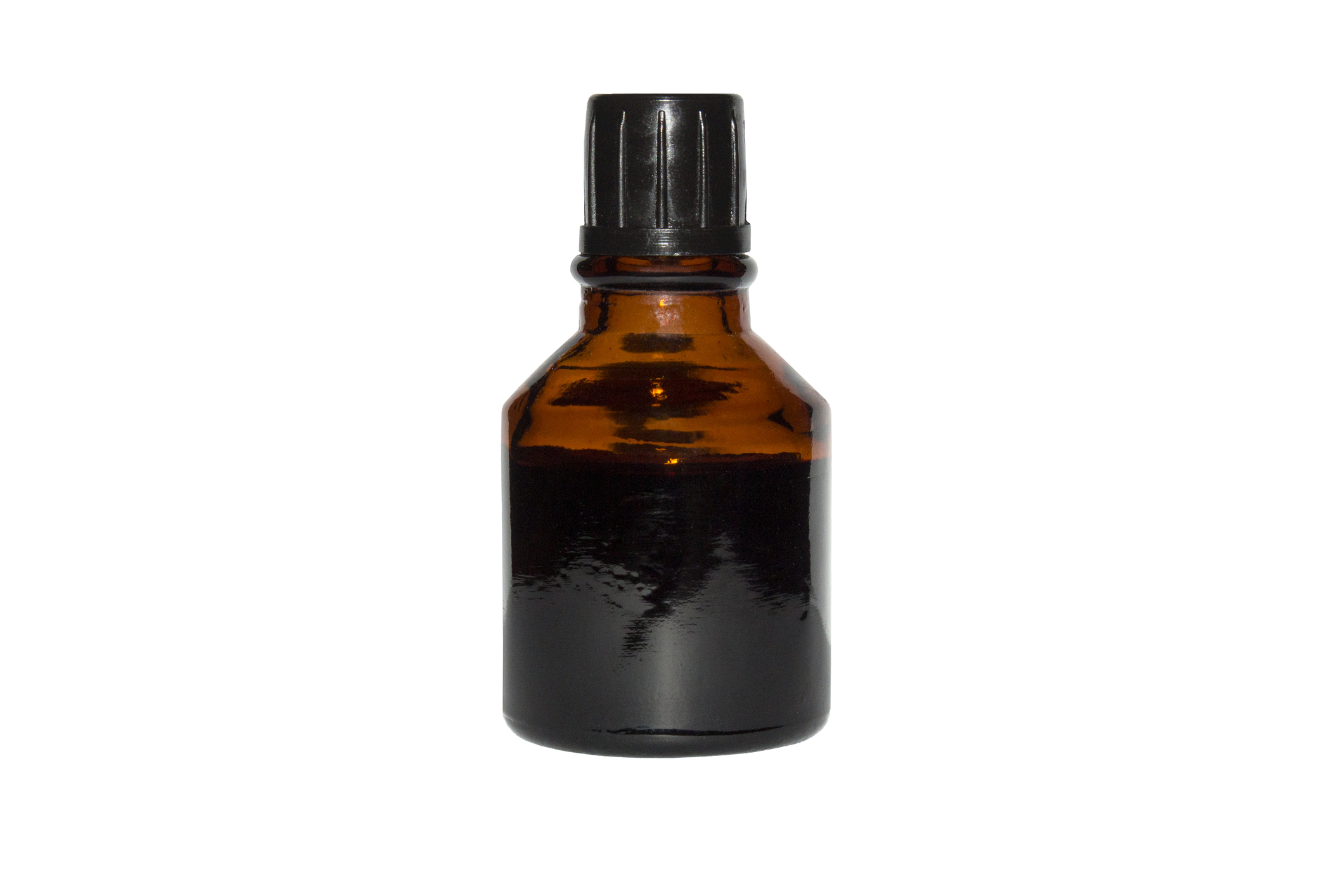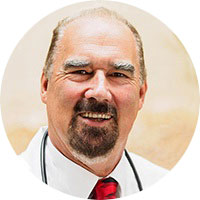Get Easy Health Digest™ in your inbox and don’t miss a thing when you subscribe today. Plus, get the free bonus report, Mother Nature’s Tips, Tricks and Remedies for Cholesterol, Blood Pressure & Blood Sugar as my way of saying welcome to the community!
A natural antibiotic the world forgot

There was a time that iodine was the go-to wound care treatment for mothers everywhere. The dark red liquid was spread over broken skin and it stung… but it worked.
It’s a natural antibiotic that’s highly effective, safe to use, inexpensive, and doesn’t lead to antibiotic resistance like pharmaceutical or over-the-counter ointments.
The history of iodine
Considered a topical antimicrobial, iodine has been used in wound care for more than 170 years. However, as far back as the fourth century, iodine-rich foods (seaweed, fish and shellfish) were used to treat sunburn.
Countless studies have determined iodine to be effective against bacteria, mycobacteria, fungi, protozoa and viruses. It can be used to treat both acute and chronic wounds.
Since the 1800s, iodine has been utilized in surgery to prepare the patient’s skin and prevent wound-site infections. Safer mixtures of these first uses are still used in surgery today.
This element is naturally occurring in nature and plays a key role in human bio-functions. You cannot produce thyroid hormones without iodine. Your body cannot produce iodine and must get it from food sources.
There was a time that iodine was a bigger part of the human diet (especially for those who lived near the ocean). Generally speaking, the further inland (further from the ocean), a person lives, the lower the iodine content of food and crops grown there.
That’s why iodine is the “ocean nutrient!”
Wound care
There are two common mixtures of iodine: Povidone iodine (PVP-I) which is found in most over-the-counter solutions and Cadexomer iodine which is used in cavity wounds. PVP-1 is sold in many variations and is the most common iodine solution available.
In one study, PVP-1 killed more than 99% of methicillin-resistant Staphylococcus aureus (MRSA) cells within 10 seconds of exposure.
Basically, iodine kills germs dead on contact. It’s an outstanding antiseptic! It’s also an excellent natural antibiotic.
However, it’s been ignored by the mainstream medical community (outside of surgical procedures) for decades! Iodine works quickly and effectively. When taken internally, it’s critical to adjust the dose. Wait… taken internally? Yes, I said that.
Thyroid function
Iodine is raw fuel for your thyroid gland. Your thyroid literally can’t function without it present in adequate amounts. Iodine deficiency can lead to swelling of the thyroid gland (goiter), as it tries to cope. Not getting enough of this essential element can lead to hypothyroid states and all that that entails. Low energy, weight gain, poor hair and nails, heavy periods (women), struggles with fertility, loss of libido and slowed speech.
Brain development
Iodine is crucial to proper brain and neurological growth. Children from very low iodine regions have been shown to develop slower mentally due to untreated congenital hypothyroidism. Its’ very existence shows you the power and importance of this nutrient.
Brain development is dependent on normal thyroid hormone levels. A progressive intellectual deterioration occurs with each passing week in the absence of appropriate thyroxine replacement. Severe developmental and physical delays occur by six months of age. Treatment in infancy will reverse the physical changes, but sadly not the neurological damage.
The development of iodized salt (a “solution” that backfired)
To prevent iodine deficiency, iodine was added to table salt. This was extremely shortsighted since the mainstream medical community has been advocating low-salt diets for nearly 50 years. They forgot that (for most people) this was also a “low iodine diet” since they weren’t getting enough of this nutrient anywhere else.
To make matters worse, the modern food industry adds bromine to bread and most areas in the U.S. add fluoride to your water. They both compete with iodine and increase your risk of deficiency. If you regularly consume ocean foods (marine vegetables and fish), then you’re probably getting enough in your diet. If you don’t, then you probably need to supplement.
Let’s get back to iodine as a natural antibiotic
As early as June 1, 1905, an article was printed in The New York Times about the successful use of iodine for consumption/tuberculosis.
In 1945, J.D. Stone and Sir McFarland Burnet (who later went on to win a Nobel Prize for his Clonal Selection Theory) exposed mice to lethal effects of influenza viral mists. Deaths were prevented by first putting iodine solution in mice snouts prior to placing them in chambers containing influenza viruses.
Iodine penetrates bacterial cell walls. Although its’ precise killing mechanism is uncertain, it’s likely related to hindrance of bacterial protein synthesis, disruption of electron transport, DNA denaturation, and/or membrane destabilization.
A word of caution about iodine consumption
Insane “armchair health advocates” have two very prominent blind spots. One, that everything from conventional medicine is toxic at any dilution. Two, that everything and anything natural can do no harm at any concentration.
These are both blatantly wrong. Opium and hemlock are natural. Too much of either and your heart will stop beating permanently!
Iodine may have dangerous side effects when taken internally. Any substance that impairs electron transport in the cell or has the potential to denature DNA should be used carefully.
So, I advise caution, certainly where there is a history or possibility of tuberculosis. That would include me. All my farming uncles and aunts and other relatives were at very high risk of TB and we drank plenty of raw milk. One study found that iodine shakes loose old TB cells. Tuberculosis never really goes away or gets cured. It simply goes into deep hibernation, waiting for the immune system to take a week off work!
With that said, you still need iodine! Even with a history of TB, you need to supplement iodine. The thyroid is your master metabolism gland. Your body can’t function without it. However, before you use it internally as a natural antibiotic, you must be cautious of dosage.
Administration and doses
Forget the iodized table salt. It’s not enough (and if it is, you’re probably getting way too much salt). Seafood of all kinds is better.
Consider, at least from time to time, full-on supplements of iodine. Whether you are hypo-, hyper-, or normal thyroid, it is important for the next few years to take sufficient iodine to lock out the bad stuff. Radiation exposure from man-made disasters (Fukushima and Chernobyl) will haunt our bodies and health for years to come. Chernobyl was in 1986 and we’re still dealing with the repercussions!
I always recommend Lugol’s Solution Iodine which is 85% distilled water, 10% potassium iodide, and 5% elemental iodine. The best dose is 10-12mg daily. It takes more than six months to correct an iodine deficiency (be patient).
Some foods hinder iodine utilization so avoid those for a little while. Kale, cabbage, peanuts, soy, Brussels sprouts, cauliflower, broccoli, kohlrabi, and turnips can be added back to your diet once you’re confident that your iodine levels have returned to normal.
You also need adequate selenium (it works intimately with iodine). The selenium found in your thyroid is a higher concentration than anywhere else in the body. Consider 100-200 mcg of selenium daily. It’s also a powerful cancer-protective.
Iodine is just one of many simple yet potent natural antibiotics. A wealth of these powerful alternatives can be found in my book How To Survive In A World Without Antibiotics.
Sources
- Cooper R. A review of the evidence for the use of topical antimicrobial agents in wound care. — World Wide Wounds 2004
- Selvaggi G, Monstrey K, Van Landuyt. “The role of iodine in antisepsis and wound management: a reappraisal.” — Acta Chir Belg 2003; 103: 241-7
- Lawrence J. “A povidone iodine medicated dressing.” — J Wound Care 1998; 7(7): 332-6.
- Schreier H, Erdos G, Reimer, K et al. “Molecular effects of povidone-iodine on relevant micro-organisms: an electron-microscopic and biochemical study.” — Dermatology 1997; 195 (Suppl): 111-16
- Iodine Deficiency — American Thyroid Association
- :Iodine Made Easy — Wounds International
- Lacey RW, Catto A. Action of povidoneiodine against methicillin-sensitive and resistant cultures of Staphylococcus aureus. — Postgrad Med J 1993; 69(3) Suppl: S78-83.
- How Your Thyroid Works — Endocrine Web
- “Cretinism: The past, present and future of diagnosis and cure.” — Paediatrics Child Health. 2003 February; 8(2): 105–106. PMCID: PMC2791432
- Scott R. Edwards, M.D., “Iodine In Tuberculosis” — JAMA. 1926;87(7): 509-510.doi:10.1001/jama.1926.02680070055027
- Naithani R. “Organoselenium compounds in cancer chemoprevention.” — Mini Rev Med Chem. 2008 Jun;8(7):657-68.













